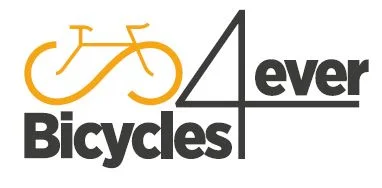Best Cycling Body Types (Ectomorph?) | Bike Fitter Explains with Road Cycling Academy
Source: Road Cycling Academy Youtube Channel: Best Cycling Body Types (Ectomorph?) | Bike Fitter Explains
Video Best Cycling Body Types (Ectomorph?) | Bike Fitter Explains with Road Cycling Academy
Video Best Cycling Body Types (Ectomorph?) | Bike Fitter Explains with Road Cycling Academy YouTube Channel.
Best Cycling Body Types (Ectomorph?) | Bike Fitter Explains
The Ectomorph Body Type: Understanding Your Genetic Blueprint
When it comes to body types, the concept of ectomorph, mesomorph, and endomorph has been around for decades, dating back to the work of William Sheldon in the 1940s. An ectomorph is characterized by a lean physique, high metabolism, and difficulty gaining muscle mass. This body type is often seen as the epitome of a quintessential ectomorph – someone who is long-limbed, with a short torso and low body fat. For those who are unfamiliar with this concept, it’s important to understand how your genetic blueprint can influence your physical attributes and metabolism.
Understanding the Ectomorph’s Metabolism and Nutritional Needs
Ectomorphs have a unique metabolism that tends to lean towards high carbohydrate consumption and easy catabolism of muscle tissue. This means that their bodies require a surprising amount of protein to prevent the breakdown of muscle fibers. Without adequate protein intake, an ectomorph’s body may resort to breaking down its own muscle tissue for energy, hindering the ability to gain muscle mass. This highlights the importance of prioritizing protein consumption, particularly after intense physical activities such as cycling, in order to support muscle recovery and growth.
The Importance of Protein: Nourishing and Protecting Muscle Mass
For ectomorphs, protein is a critical component of their nutritional needs. Consuming high amounts of protein on days when weight training or following intense cycling sessions can aid in preventing catabolism of muscle tissue. Additionally, focusing on protein-rich foods and supplements can contribute to the maintenance and growth of muscle mass, addressing the challenges of being a “hard gainer” – someone who struggles to build muscle despite their efforts.
Incorporating Weight Training to Build Muscle Mass
While an ectomorph’s genetic makeup may predispose them to a lean physique, incorporating weight training into their fitness routine can contribute to building muscle mass. Engaging in rigorous leg weight training once a week and prioritizing protein consumption on those days can create an environment for muscle growth. This evidence-based approach showcases the significance of targeted weight training and protein intake in sculpting a stronger, more resilient physique.
Overcoming Neuromuscular Limitations: Strengthening Weaknesses for Performance Improvement
Ectomorphs are known to struggle with neuromuscular efforts, such as shorter sprints, due to their genetic predisposition. However, by actively working on improving neuromuscular power through targeted weight training and protein supplementation, they can shore up this area of weakness. By focusing on their limitations and progressively enhancing their neuromuscular capacity, ectomorphs can develop a more well-rounded performance profile, addressing their physiological and metabolic challenges head-on.
Optimizing Cycling Performance: Positioning and Training Strategies
When it comes to optimizing performance for ectomorph cyclists, aerodynamics and cardiovascular ability take center stage. By focusing on a cycling position that emphasizes reduced wind resistance and efficient oxygen utilization, ectomorphs can leverage their strengths and compete more effectively. Through strategic training that targets their weaknesses and harnesses their cardiovascular capabilities, these cyclists can enhance their overall performance on the road.
In conclusion, understanding the nuances of being an ectomorph cyclist can yield valuable insights into the unique nutritional, training, and performance considerations associated with this body type. By embracing targeted weight training, prioritizing protein consumption, and optimizing their cycling position and training approaches, ectomorph cyclists can overcome inherent challenges and unleash their full potential on the road. With these strategies in place, the road cycling academy aims to empower ectomorph cyclists to thrive and excel in their pursuits, embracing the tenacity and resilience intrinsic to their genetic blueprint.
The opinions expressed in this space are the sole responsibility of the YouTube Channel Road Cycling Academy and do not necessarily represent the views of CicloNews.

